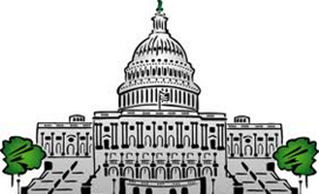What I Want for Christmas – eDiscovery Wish List

With over 1,070 posts since September 20, 2010, we’ve had a lot to say about eDiscovery over 4+ years. However, we’ve never published a Christmas wish list of what we’d like to see happen in eDiscovery over the next year, so I thought I’d offer up some eDiscovery Christmas wishes. Let’s see if any of those come true within the next year!
Some of these wishes might be attainable and others might be akin to wishing for “world peace”, but here they are, for better or worse. Remember, I’m not an attorney (and I don’t play one on TV), so keep that in mind.
Consistency in Awarding Costs for eDiscovery Services: Over the past few years, we’ve seen numerous prevailing parties request recovery of costs, including eDiscovery costs. Judges, ruling on cost reimbursement, typically reference 28 U.S.C. § 1920 (especially §1920(4), which covers “Fees for exemplification and the costs of making copies of any material where the copies are necessarily obtained for use in the case”) in their rulings as the basis of their determination for taxation or recovery of costs.
For every case, like this recent case, where recovery of costs is approved, there is another case, like this one, where the recovery costs is denied (or overturned on appeal). Here are three other cases where the reimbursement of costs was awarded and three other cases where that reimbursement was denied (or reversed) by the courts. It would be great to see consistency in those rulings with a tendency toward a broadened interpretation of “making copies” and “for use in the case” to hold losing parties more accountable for the costs that the prevailing party has incurred to defend itself.
Rule 37(e) Won’t Give Producing Parties Too Much Latitude in Failing to Preserve Data: We’ve covered the upcoming changes to the Federal Rules quite a bit over the past few months, including posts here, here, here, here, here, here and here, as well as our thought leader interview series earlier in the year, where we asked for their thoughts about the impending rules changes.
Much of the concern raised by our thought leaders and many others regarded proposed Rule 37(e), which is intended to create a uniform national standard regarding the level of culpability required to justify severe sanctions for spoliation. For the advocates of the rule, it perhaps reduces the “preserve everything” mentality that has driven up eDiscovery costs for many organizations; however, others are concerned that it will take that decision out of capable judges’ hands in determining the appropriateness and severity of sanctions for parties that fail to meet their preservation obligation. Hopefully, with the proposed rule having been amended multiple times, the final version is a happy medium that doesn’t give preserving parties too much leeway in meeting their preservation obligations. We’ll see.
Greater Consideration of Alternate Billing Methods, Especially for eDiscovery Review: While predictive coding is all the rage, most eDiscovery projects (even ones using predictive coding) still require some manual review to be performed. In some cases, they require a lot of manual review. And, when law firms bill by the hour on those cases, they make a lot of money. In some cases, this leads to abuse as we discussed last year with DLA Piper being sued by its client for $22 million for overbilling. Or this case, where the plaintiff tried to bill contract attorneys at a blended rate of $466 per hour (our most viewed blog post ever!).
If more organizations insisted on a per document (or per page) rate instead of a per hour rate, that could make document review costs more predictable and possibly more consistent. As Craig Ball pointed out in last year’s post on the topic, that system isn’t perfect as a one page document and a 300 page document would be treated the same. It’s a good point. Nonetheless, in a large enough document collection, it would presumably average out and it would give the client some cost certainty for helping estimate the cost of the litigation. My wish is that more law firms will consider this approach and more organizations will insist on it.
Most Attorneys Will Finally “Get It” Regarding eDiscovery: OK, that IS like asking for world peace, isn’t it? Maybe not. Last year, the American Bar Association (ABA) approved an important new resolution under the duty of competence (Model Rule 1.1) that requires lawyers to “keep abreast of changes in the law and its practice, including the benefits and risks associated with relevant technology”. And, this year, our most populated state (California), released a Formal Opinion that is designed to establish an attorney’s ethical duties in the handling of discovery of electronically stored information, requiring “at a minimum, a basic understanding of, and facility with, issues relating to e-discovery”. Hopefully, more states will follow.
Ethical obligations, along with numerous resources to educate attorneys, such as this blog and plenty of others (including the ones we’re thankful for here), will maybe eventually make a difference. CloudNine understands that educated clients are the best clients, so that’s one of the reasons we publish eDiscovery Daily every day. Hopefully, it won’t take retirement of the “old guard” (as some of our thought leaders have suggested) to get there.
Santa, that isn’t too much to ask, is it? 🙂
On a personal note, I’ve already gotten what I wished for. A beautiful wife (who already got my favorite watch fixed and got me Houston Rockets tickets!) and great kids are a Christmas dream come true!
So, what do you think? What do you want for your eDiscovery Christmas? Please share any comments you might have or if you’d like to know more about a particular topic.
eDiscovery Daily is taking a break for the holidays and will return on Monday, January 5.
Happy Holidays from CloudNine Discovery!
Disclaimer: The views represented herein are exclusively the views of the author, and do not necessarily represent the views held by CloudNine Discovery. eDiscoveryDaily is made available by CloudNine Discovery solely for educational purposes to provide general information about general eDiscovery principles and not to provide specific legal advice applicable to any particular circumstance. eDiscoveryDaily should not be used as a substitute for competent legal advice from a lawyer you have retained and who has agreed to represent you.







